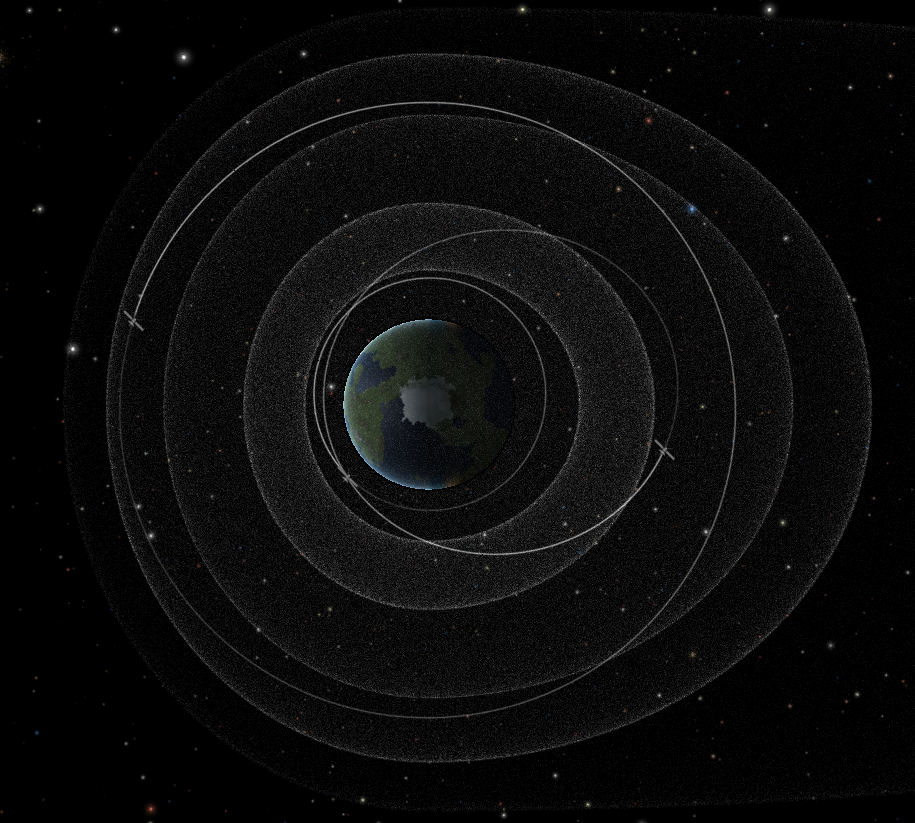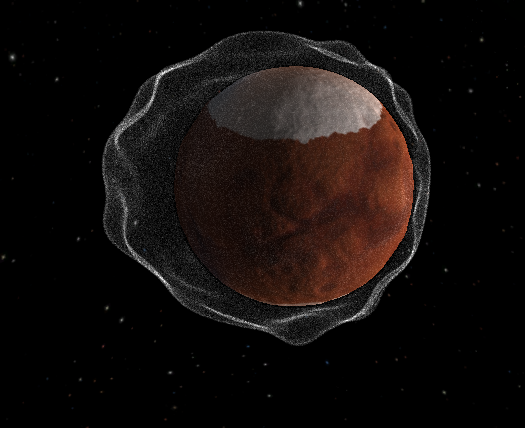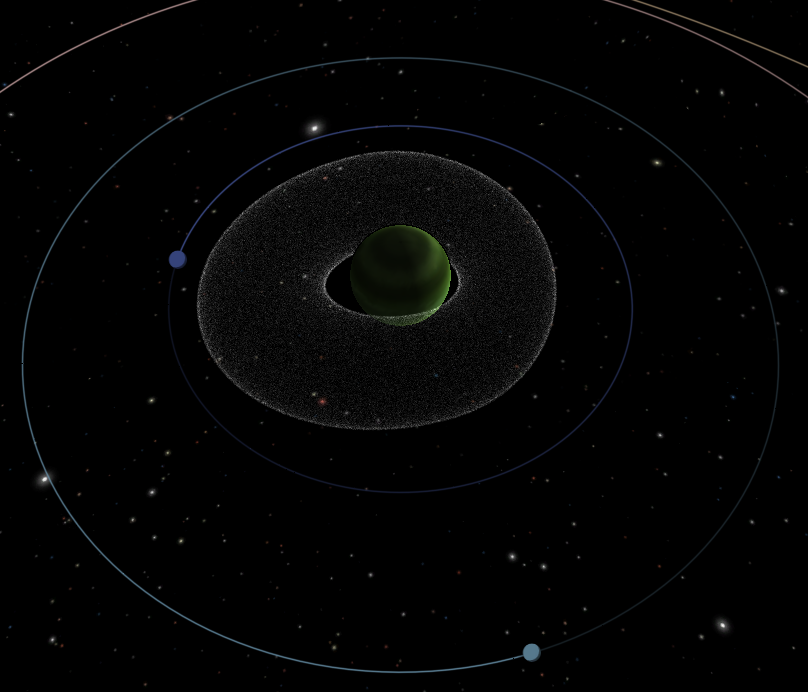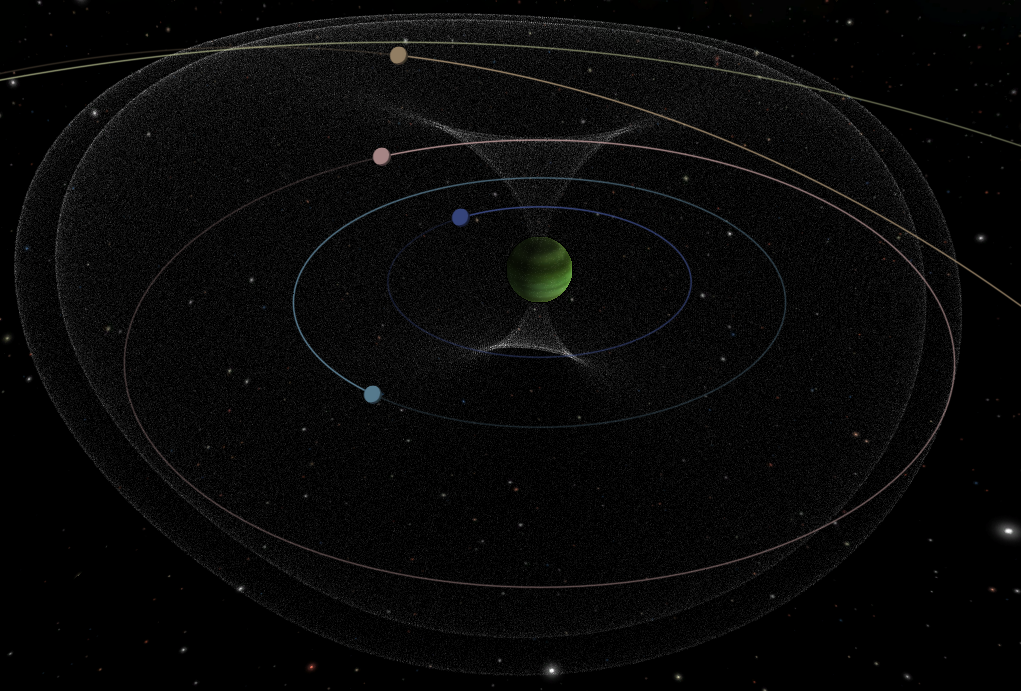Environment¶
Temperature¶
Temperatures in space range from ridiculously low to extremely high. The temperature model in Kerbalism considers
- solar radiation (the energy flux coming from a star, if not occluded)
- albedo radiation (the energy flux reflected from a celestial body towards a vessel)
- body radiation (the radiative cooling flux from a nearby celestial body)
- cosmic background radiation
The temperature is then obtained according to the Stefan-Boltzmann law assuming the vessel is a perfect black body. Inside an atmosphere, the stock atmospheric temperature model is used instead.
Radiation¶
Celestial bodies interact in complex ways with radiation. Some have a magnetopause that shields radiation. Others have regions populated by extremely charged particles. The magnetopause is simply a sphere, possibly deformed along the body->star vector to define a magnetotail.
This is modeled with radiation fields, regions of space around a celestial body that have an associated radiation level. The overall radiation level for a vessel is determined by evaluating all the fields overlapping at the vessel position.
These fields are rendered in map view or the tracking station. They can be toggled by pressing Keypad 0/1/2/3, or by using the Body Info window.





Radiation Models can be modified, see the Modding Kerbalism’s Radiation Models section for more details.
Space weather¶
Coronal Mass Ejection events are generated in a stars corona, and move toward either a planetary system or a star-orbiting vessel. A warning will be issued as soon as the CME is ejected towards a body of interest. When the CME hits a planetary system or a star-orbiting vessel, all vessels outside of a magnetopause and in direct line of sight of a Star will receive extra radiation. Vessels inside of a magnetopause will suffer a communications blackout. The effects last for some time until the situation returns to normality.